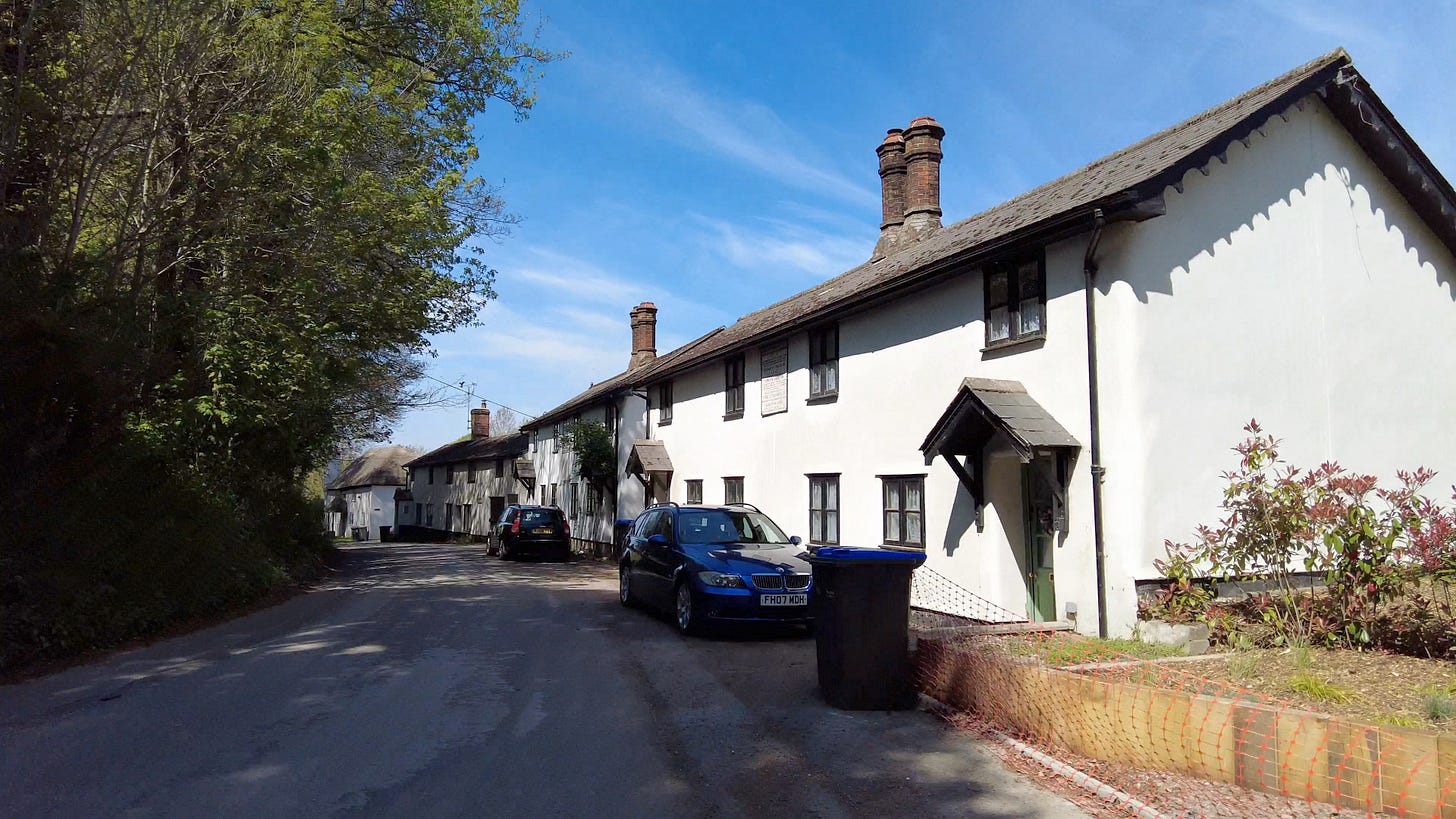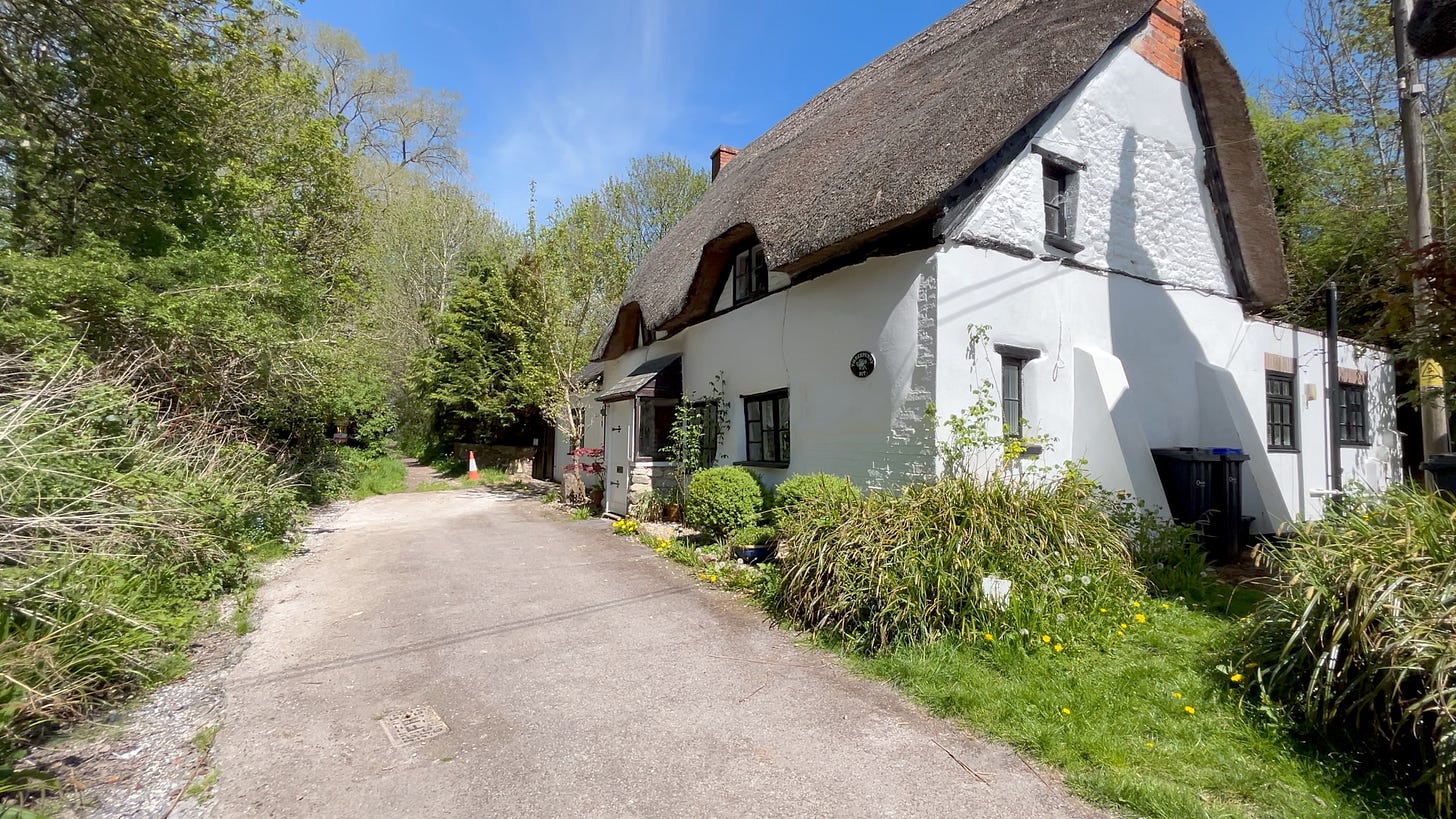Let's Explore Orcheston
This is off the beaten track in rural Wiltshire
Orcheston Two Parishes That Became One
With the unusually warm weather and sunshine it was too good an opportunity to miss. A trip out to a village that I have never been to before but have passed it by possibly more than a hundred times.
Orcheston (pronounced Or-chest-ton, not as in orchestra) is a very tiny village stretching along a lane which comes to a dead end. The area is surrounded by Salisbury Plain and much of the land is used by the British Army for training.
My visit is accompanied by the sound of an army Chinook helicopter moving very slowly on a training exercise. At least I can be thankful that today the guns are silent. The village might be quiet and rural, the nearest large village is Shrewton barely a mile away, but the army can shatter the peace.
The village was formerly two parishes, named after the two 13th century churches. St Mary’s at the north end of the village and St George’s in the south. The latter has been redundant since 1982. It is now in the care of the Churches Conservation Trust.
Bathed in the warmth of the sun, I start my tour of Orcheston at St George’s Church.
The church is occasionally opened for visitors, but not today. There is property each side but much of the perimeter is open fields connecting it to the Wiltshire landscape. I always try and read some of the headstones whenever I enter a cemetery. Lost lives and in the main, lost history. Forgotten stories and often as time moves forward, forgotten people. Who were they? What did they do? Too many to investigate, but for some searching for their roots will be helpful in their quest to find out about their ancestors.
Facts about Orcheston
The tiny village of Orcheston lies about 11km WNW of the town of Amesbury in the county of Wiltshire. It’s quite close to the prehistoric world famous Stonehenge.
The origin of the name is not known. The ton on the end in Old English place names relates to a settlement, farmstead or collection of farmsteads. The first part of the name could well be the name of a person; something that is not uncommon in place names in England.
The spelling in the Domesday Book (1086) is Orcestone in three entries and Orchestone in a fourth. Not too different from today’s spelling.
In the late 13th century the village was called Orcheston Bovill, that being the name of the lords of the principal manor at the time. St Mary’s was added during the 14th century and likewise St George in the south. Two churches, two parishes.
Before the 11th century the village may have been a single estate. That was spilt into four. Two of the estates becoming Orcheston St Mary, the others Orcheston St George.
To the north of the village lie prehistoric field systems. There has been a long occupation of the land in this area.
Leaving St George’s Church it’s a short walk to the crossroads. I need to follow the road opposite to head north into the more populated part of the village. Turning left would lead me to the A360, where I could travel to Devizes or south to Salisbury. The right turn goes to the hamlet of Elston and reaches the north of Shrewton.
Surprisingly, there is a small, modern village hall on my right. To my left are houses that appear to have originally been built by the local authority. They must now be worth a tidy sum for those tenants who exercised their right to buy.
The tall trees along the lane cast beautiful shade of light and dark on the gardens and road below. I reach a bend in the road and here I discover the Flood Cottages. They make no attempt to hide the reason they were built in 1842. A couple of large plagues tell us that they were built to re-home many who had lost their homes in the great flood of January 16th 1841. The Till valley was overwhelmed by the heavy rain and thaw on the fateful Saturday afternoon. Down in Shrewton, and along the valley here, the water poured in from Salisbury Plain. Houses were swept away in the torrent and three souls lost their lives. It’s amazing that it was just three who died when the history of the flood is related.
Next door a large white cottage bears the name - The Stores. It never fails to amaze me how the smallest of villages had a store and often a post office, even bakery within them. Today, many large villages no longer support a shop, as supermarkets and online retailers take so much of the business. How were shopkeepers back then able to make a living? True, for many it was their home as well, and possibly other family members had jobs, but, even so, few today could survive that way.
My feet move quicker as the road moves steeply downhill for a while and a sharp right-hand bend takes me to lower ground and the river. There are scattered homes and driveways to farms along my route.
It’s not long before I reach a more densely packed area of trees. If you have a cat who is looking for a vacation, on my left is the entrance to the Stonehenge Cat’s Hotel. Those moggies know how to live!
On my right is a tall beautiful house with a very grand porch. Next to it is an old, former, 19th century Church of England School followed by two thatched cottages. The school was built in 1854. By 1871 it had become a National School and closed in 1932. The year before it closed there were just sixteen pupils enrolled. The road ends with a footpath ahead.
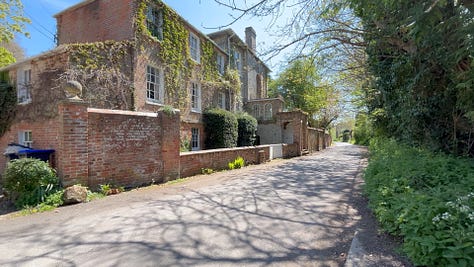
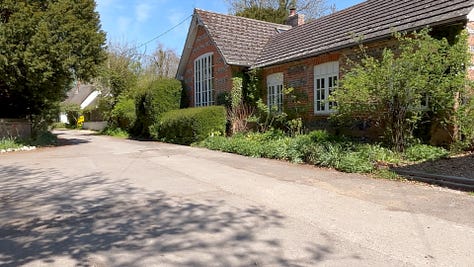

On the other side of the church a house sign on the driveway entrance wall says - “The Rookery”. How very apt, as sitting high in the trees surrounding the house are rooks creating raucous concert! Mix that in with the returning Chinook and I am not sure which is the louder. On reflection, the birds win. I much prefer the song of a blackbird above the din of these black feathered avians. How do the occupants of The Rookery fare? Maybe they have ear defenders to wear.
The Rookery was the principal farmhouse in Orcheston. In 1753 it was extensively repaired, so this house has a long history. The thatched cottages are 17th century, and it was in this area of the village the flood of 1841 swept away many homes.
St Mary’s Church has a clock, sadly the hands over the light blue dial are stuck at 10.30 pointing to X and V. Why do we like Roman numerals on clocks? The Romans did leave England a long time ago. Answers in the comments, please.
The church is unlocked. I open the door and let my eyes adjust for a few seconds coming in from the bright sunshine. However, it’s not too dark as there are plenty of windows letting in light. I take a few photos to share with you and take my leave back into the warm sunshine.
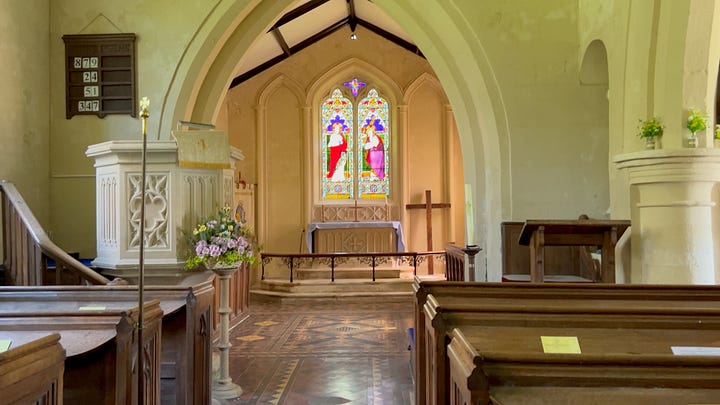
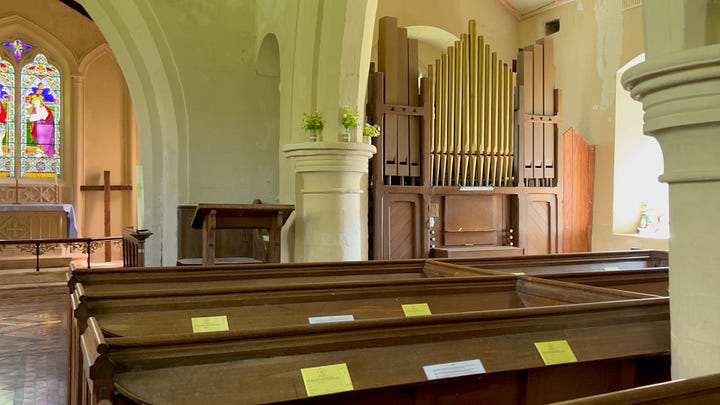
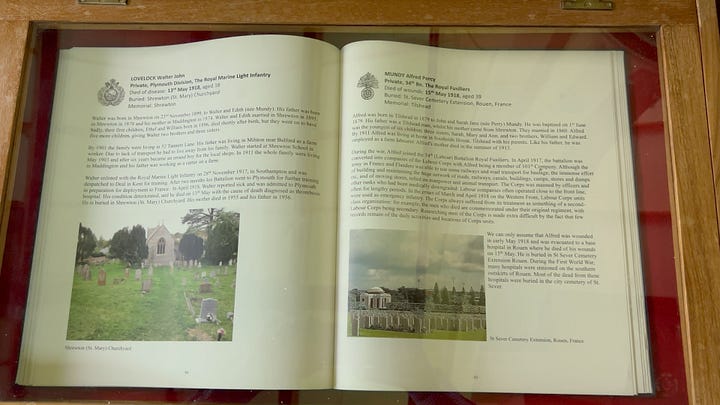

This brings me to the end of my journey but I take a few moments to look at the headstones. The rooks are still creating a racket. With that, it’s time to leave Orcheston. It’s a lovely place to visit and if you get the opportunity, please stop by.
Thank you for reading and please do become a subscriber if you’re not already.





